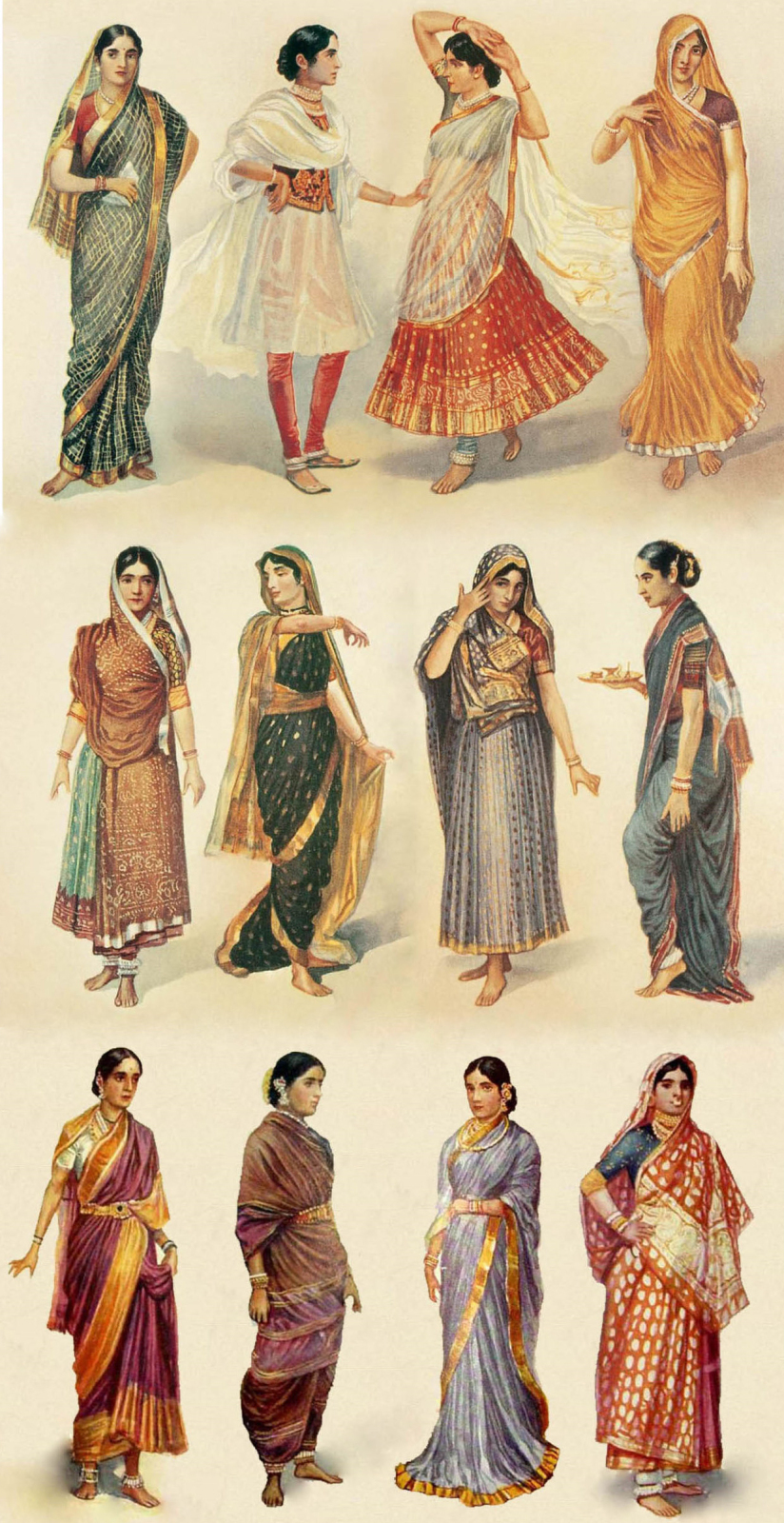So, what does the average Phoenician know about his or her city? Here are some basics:
 | |
| Styles of various Saris |
- Humans are the most common race in the city.
- The Phoenician year is 365 days, with 12 months, and a seven day week. Every four years, one day is added at the end of the year.
- The Phoenician climate is a Mediterranean climate; more akin to the Climate of Southern France and the Levant. The winters are cool and the summers are warm. During the summer, there is the occasional thunderstorm.
- Pheonician men either wear loose clothing, like a chiton or a lungi, or clothes out of an Arabian Nights movie (long, billowing trousers and a vest) with sandles or shoes. Women are expected to wear a chiton and himaton or sari; however in this new age young people are becoming more daring! Near nudity or full nudity is becoming common among both sexes. As both wizards, philosophers, and psions hunt for the truth and pontificate their findings, people are becoming comfortable with more revealing clothing or nudity; and its more acceptable for women to cross-dress a little. It's still common to see a Phoenician man or woman to be fully clothed or half clothed; but near nudity or nudity in public places are increasing in frequency.
- Men usually keep their hair short and are clean shaven, it's become fashionable among some in the Persian section to wear turbans.
- Women typically like to wear their hair long and styled. Some daring young women, however, are experimenting with "hair dyes" and short cuts.
- The typical commoner earns 1 sp to 3 sp per day. A silver piece is often called a "dinar" or "drakma" (the dinar is more popular).
- The Moneychangers control the banking industry, but it's different. You rent out a personal vault which you can store large sums of cash and use certificates of credit to represent the amount you have in the bank.
- Buildings have primitive glass windows which are teased into shape by stretching. The windows are translucent, although some glaziers are working on a blowing technique to get transparent windows.
- Most buildings, not all of them, have indoor plumbing. The pipes are made of non-rusting metals (like lead).
- You can hire a messenger to carry notes and packages anywhere in the city (these messengers worship Hermes or Siva), and this typically costs 1 sp per delivery. There is also a psionic messenger service.
- Chariots are widely available to take you where ever you want to go. This service costs about 1 sp per trip within the city.
- Most Phoenicians fear the undead that is rumored to stir in the Necropolis. However, more people fear fire, thieves or robbers, and plague.
- Ratmen (Slitherin or Skavin) live in the sewers.
- Rumors often speak of cults worshiping the dark side of Shiva or Khali are finding new members these days.
- Spells that make people do things that they normally would not do, like Charm Person or Dominate Person, are illegal. So are their psionic counterparts (but evidence of the second is hard to find). Spells cast and psionics used for entertainment purposes are the exception.
- Spells or psionics that create Undead or spread plague is considered to be a capital offense.
- Most shops and businesses close at sundown, which means business hours are longer in the summer than in winter. Few are open seven days a week.
No comments:
Post a Comment